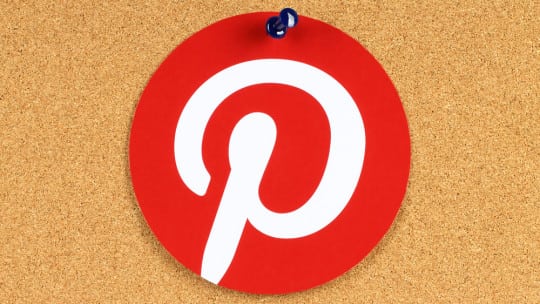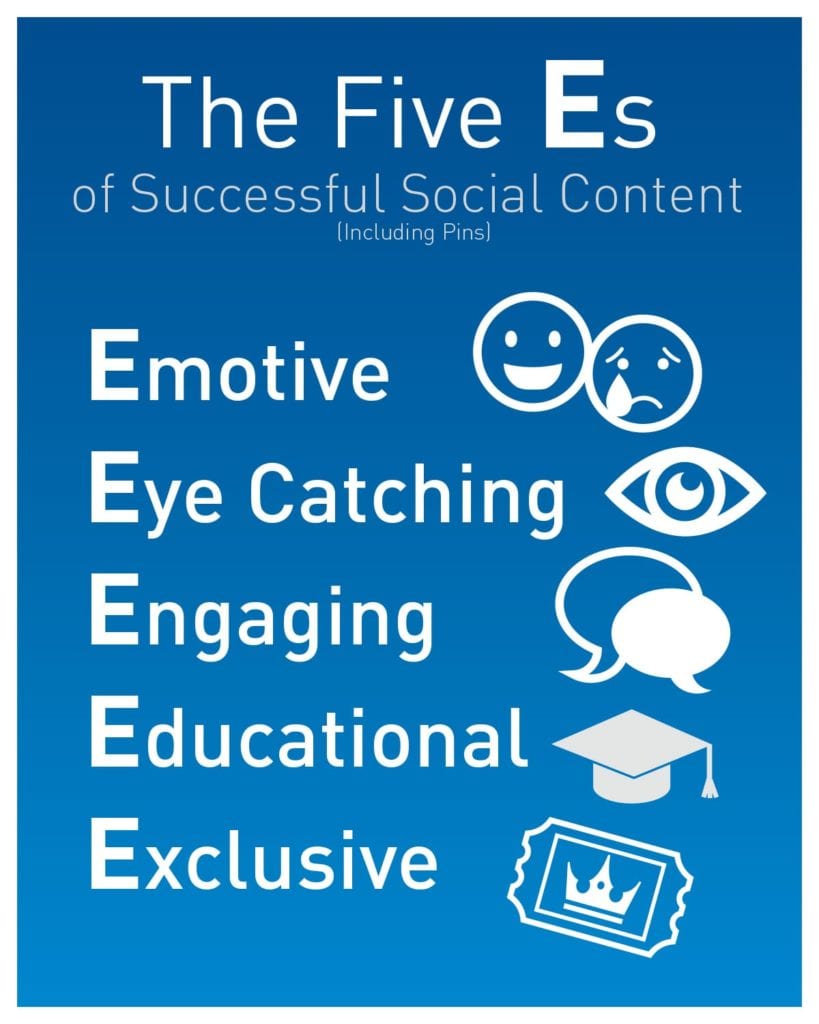

“Really? You guys are on Pinterest?”
“Yep.”
“Interesting. I’d be very curious to talk with you more about that.”
“Happy to. I’m a fan and I think it’s proven to be a valuable network for us.”
I had this conversation with a social media leader from another global technology solutions company recently. It’s a conversation I’ve had several times with many other social leaders at B2B brands over the past few years. Their initial reaction of surprise followed by curiosity is understandable, given that Pinterest has traditionally appealed primarily to women and is best known as the place to find fashion and wedding inspiration.
However, the tide is turning.
Recent data indicate Pinterest’s audience is rapidly diversifying, as men join the network at a growth rate of 70% year over year, although women remain its dominant followers. The site’s audience growth and diversification further underscore the idea that Pinterest is an untapped opportunity for B2B communication pros.
What’s the Pinterest Opportunity?
You’ve likely seen Bryan Kramer’s popular H2H meme floating around the internet over the past few years; it says “There is no B2B or B2C. It’s H2H: Human to Human.” Social media as a communication tool, and Pinterest in particular, underscores the truth of his fundamental claim that we aim to connect at an individual level. With that in mind, Pinterest creates a meaningful opportunity for B2B PR pros to derive value from this visual platform.

- Benefit 1: Enhanced Storytelling
Pinterest enables a B2B business to flex its creativity muscles. Simply put, it’s an opportunity for B2B pros to think bigger and bolder, especially if they typically operate under more restrictive brand guidelines. And in the 24/7 cacophony that is social media, all brands—B2Bs in particular—need to seize opportunities to capture the imagination of their target audience.
Unique to Pinterest is the opportunity for B2Bs to tell visual-first stories by relying more heavily on third-party content. It’s different from other visual networks, which many B2Bs find challenging to properly utilize if they don’t have an inherently visual corporate culture or offer products that can be easily filmed or photographed. Due to the ability to use others’ content, the utilization threshold for Pinterest is lower, and it offers B2Bs additional flexibility in building and maintaining a pipeline of board content.
For example, Level 3 Communications pins third-party images to our Where You’ll Find Us board to indicate the breadth of our global footprint. We intentionally steer clear of images of our own office spaces, instead featuring images that capture the beauty of the cities in which our employees live and work in an effort to drive additional eyeballs to our Pinterest page.
- Benefit 2: Drive Web Traffic
Many brands optimize Pinterest’s format to help drive traffic directly to their home websites. See FedEx’s clever FedEx Throwbacks board, which showcases vintage advertising campaigns for the brand with each pin linking back to the FedEx website.
There is literally no data around the quantity and quality of attributable web traffic that Pinterest drives specific to B2Bs. That said, we know it is an important source of traffic for other industry verticals—such as retail.
Kleiner Perkins Caulfield & Byers general partner Mary Meeker noted in her 2016 Internet Trends report that Pinterest currently lands well ahead of Facebook, Instagram and Twitter in terms of the percentage of users who use the platforms to find or shop for products, with Pinterest at 55% and Facebook in second at 12%.
There is plenty of evidence to indicate that, provided the content is compelling, people will click—and potentially at greater rates than other available online ad units.
What about paid pins? Level 3 tested Pinterest advertising on several occasions, putting ad dollars behind pins we think are visually appealing and align to hot topics in our industry, such as cybersecurity and cloud computing. We found those ads’ click-through rates (CTR) outpace CTRs for other social ad units by an average of five to one. Based on our findings, we recommend you test your most relevant and visually appealing Pinterest content and evaluate the results.
- Benefit 3: Beyond Brand Awareness
An example of a B2B brand using Pinterest to go beyond a typical marketing communications play, Constant Contact’s Life at Constant Contact board gives users a unique glimpse into what it might be like to work for the company. Scroll through and I think you’ll find that the pictures certainly are worth more than 1,000 words.
Of these benefits, raising brand awareness seems most obvious and is, of course, the primary reason a B2B would join Pinterest. But, given that Pinterest is not typically considered a priority network for business, it can actually provide an opportunity for bigger impact, because there’s less overall competition for user mindshare.
In addition, Pinterest can help expose your brand to a non-traditional audience, which, as social media continues to integrate itself into every part of today’s business world, becomes increasingly relevant.
As a social media leader, think beyond using Pinterest as simply a marketing or awareness tool. How might it become a powerful tool to drive an enhanced customer experience? How might it help your brand connect with new talent, external influencers, community members, investors or partners?
Ready to Launch

Now that you understand a few of the benefits of Pinterest for your brand, how do you go about ensuring your presence is a success?
As with any new social channel, there are some fundamentals you need to cover to ensure your brand is positioned properly:
•Plan your content in advance. Take advantage of the Hidden Boards feature to pin enough content so that each board has a minimum of three pins before going public. We also recommend launching with no fewer than five boards.
•Publicize your new Pinterest page. This includes adding a Pinterest icon to the social icon tray on your website and/or in email signatures. Feel free to publish a few posts to your other social networks to invite your Facebook or Twitter followers to join you on Pinterest—just ensure you vary your storyline on each network per social media best practices.
•Put ad dollars into your launch. Pick a few of your best Pins and boost them to help aid in discovery of your Pinterest page.
•Follow relevant users.This may include other organizations in your ecosystem, journalists (they use Pinterest, too) or news outlets.
•Comment and like relevant pins.It’s not all about repinning. Engage on others’ pins to more fully tap into the viral element of Pinterest.
•Use Pinterest’s widget feature. Get creative and use Pinterest as a means to augment your other content offerings. For instance, if you’re a large consulting firm and wish to blog about innovation, why not create a complimentary Pinterest board to embed into that blog as a supplementary piece of content? It will help drive traffic to your Pinterest presence and add additional value to your blog. Win-win.
•Invite guest pinners onto your boards.Reach out to those who may already be within your sphere of influence to host a series of pins on your boards. This enables your brand to tap into others’ existing networks and expand the conversation.
The Hallmark of Success
The biggest key to success is your content. Your content will make or break your Pinterest strategy. If you build it right, “they will come.” If you don’t, well…you know. Here are the guiding principles we use at Level 3 to define great social media content across all our social networks, including Pinterest.
1. Emotive:
- Does this content elicit an emotion from my audience? Will it inspire people, make them happy, sad or maybe even upset? Whatever it does, it needs to elicit something other than apathy.
2. Eye Catching:
- Does this content pop? Does it make a viewer want to stop and look closer? This is a critical component to Pinterest. It’s a no-stock-images zone, especially for B2Bs.
3. Engaging:
- Does this content invite an action or response? Will users be inclined to reply back, click through or share with their networks?
4. Educational:
- Does the content have legitimate educational merit? What’s the new bit of information the user learns?
5. Exclusive:
- Is this content available elsewhere? Providing exclusive content that’s available only to a specific audience adds inherent value and creates additional affinity for your brand.
Pin Long and Prosper
Fundamentally, before launching your brand onto any new network, you must evaluate your goals and objectives. From there you must ask whether or not the network is right for you. Do you have the resources to properly manage the commitment? Do you have a story to tell? Do you want to do it?
If you say yes to any of these questions, I’d encourage you to test, test and test some more. With the right mix of content and creativity, Pinterest can yield surprising results, opening new avenues for audience engagement and return on investment for B2B brands.
ATTENTION SUBSCRIBERS: You can find Stacey Sayer’s check list of do’s and don’t’s for Pinterest at the PR News Pro Essentials Page: http://bit.ly/2mUP2OR
CONTACT: [email protected]
